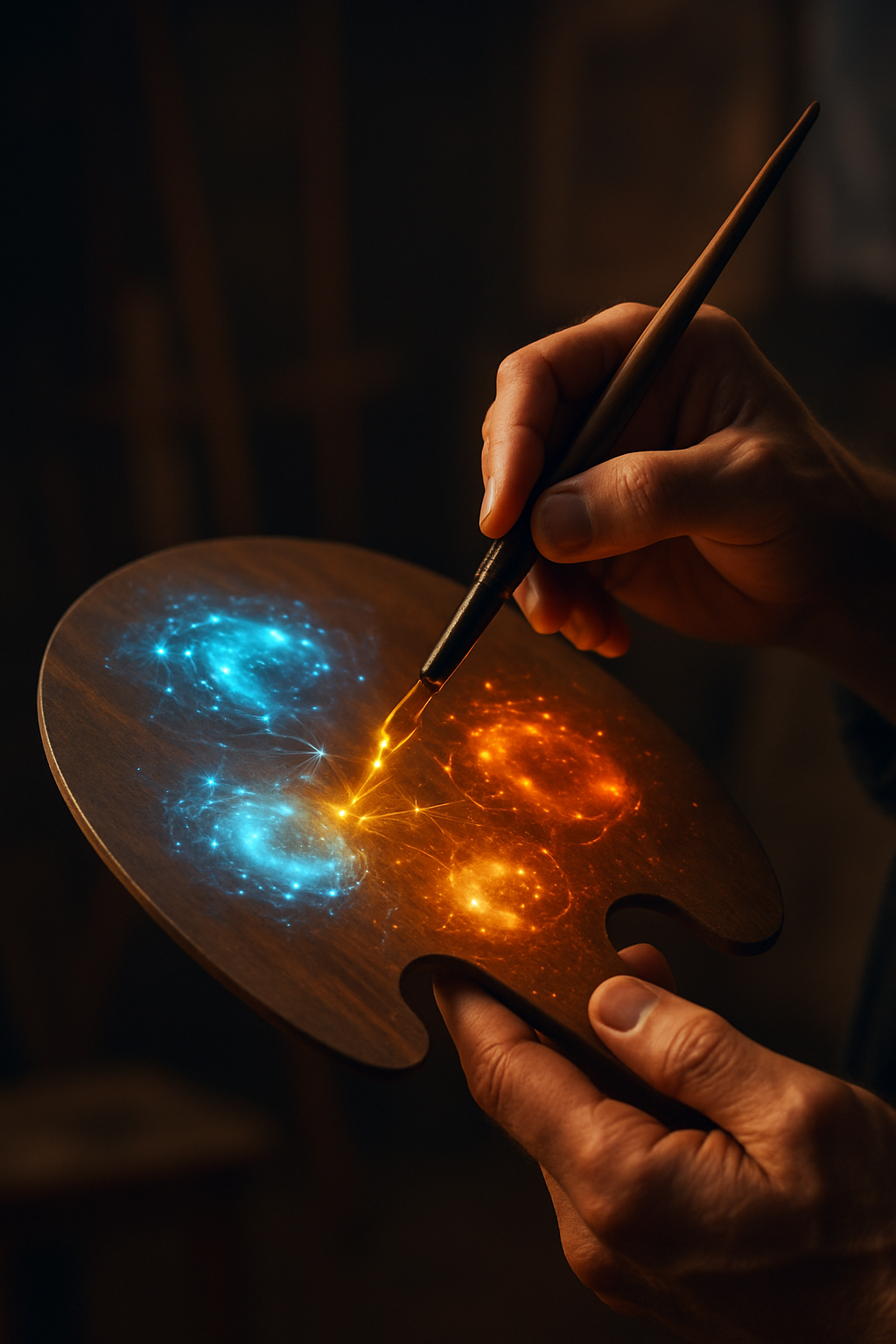Just a few years ago, the idea of describing a scene in words and seeing it materialized into a photorealistic image belonged to the realm of science fiction. Today, it’s a reality accessible to millions through a single command line on a Discord server. The name at the center of this revolution is Midjourney.
Since its first versions, which produced dreamlike and sometimes surreal images, the platform has evolved at an exponential pace. Now, in 2025, with its eighth iteration, Midjourney V8 has transcended its initial classification as an “AI tool.” Its ability to generate images with an unprecedented level of detail, coherence, and artistic control forces us to ask a deeper, more fundamental question: are we looking at a simple image generator, or are we witnessing the birth of a new and legitimate artistic medium?
This article is not a tutorial on how to write prompts. It is a critical analysis of Midjourney V8, its impact on creative workflows, and its place in the pantheon of art and design history.
The Exponential Evolution: From the Abstract to the Photorealistic
To understand the power of V8, one must look back. The early versions of Midjourney were famous for their distinct “style”—a digital fantasy aesthetic, often with dramatic lighting. It was powerful, but idiosyncratic.
With each new version, user control increased, and the “house style” diminished. V8 represents the peak of this trajectory. The ability to generate images indistinguishable from photographs, to replicate historical art styles with precision, and to create entirely new visual concepts has reached a level of maturity that places it alongside studio-level production tools.
Analysis of Version 8: The Features That Redefine Visual Creation
Midjourney V8 is not just an incremental improvement. It has introduced features that solve the biggest challenges of previous versions and open new creative frontiers.
Compositional Control and Consistent Characters
The great frustration for creators was the inability to maintain a consistent character across multiple images. V8 has introduced “character reference” systems that allow you to “lock in” a subject’s appearance, making it possible to insert them into different scenes and poses. For creating storyboards, comic books, or marketing campaigns, this feature is revolutionary.
“Universe” Generation (World-Building)
Beyond characters, V8 allows users to define the parameters of a “universe”—a set of aesthetic rules, lighting, and architecture. Once defined, the creator can generate multiple scenes within this cohesive universe. This transforms Midjourney from an isolated image generator into a world-building tool.
Interpretation of Nuance and Emotion
The language model behind V8 demonstrates a much deeper understanding of abstract and emotional concepts. Prompts that once resulted in visual clichés now generate images with surprising subtlety. The difference between “a sad man” and “a man feeling nostalgic melancholy” is now visibly translated into composition, lighting, and body language.
The Impact on the Workflow of Creative Professionals
-
For Designers and Advertisers: The speed of prototyping has become nearly instantaneous. A team can visualize ten different concepts for an ad campaign in a single afternoon, testing different styles and messages at a minimal cost and time.
-
For Filmmakers and Art Directors: Midjourney has become the definitive pre-production tool. The creation of detailed storyboards, concept art for sets and costumes, and the exploration of color palettes can now be done for a fraction of the cost.
-
For Photographers: The rise of “synthetic photography” presents both a crisis and an opportunity. For product and fashion photography, the ability to create perfect digital sets and models is disruptive. For artistic photography, it challenges the photographer to focus on capturing moments and emotions that AI cannot replicate.
The Big Question: Where is the Art? In the Prompt or the Pixel?
The most common critique of AI-generated art is that “the machine does all the work.” This view ignores the complexity and skill involved in the new art form: the curation of concepts and the engineering of prompts.
Creativity in Midjourney does not lie in the ability to draw, but in the ability to have a unique vision and to translate it effectively and poetically into the language the machine understands. The prompt is the new paintbrush. The ability to iterate, refine, and guide the AI through dozens of generations to achieve the perfect image is an intense and deliberate creative process. The art is not in the pixels the AI generates, but in the intent, taste, and vision of the human guiding it.
Conclusion: Midjourney V8 as a Catalyst, Not an End
Midjourney V8, with its impressive technical capabilities, should not be seen as an endpoint for creativity, but as a powerful catalyst. Just as the invention of the camera freed painters to explore the abstract, Midjourney is freeing visual creators to focus purely on imagination.
https://brainicore.com/recommend/Midjourney-Navigator-Charting-Your-First-Course-in-AI-Art-Volume1
It is not a substitute for human creativity, but an amplifier. The future of art and design will not be a battle between humans and machines, but a collaboration, a symbiosis where our ability to dream is the only limit. And, as we saw in our analysis of Human-AI Symbiosis, this collaboration is the future of all fields of work.
The question is no longer “can a machine create art?”. The real question now is: “What new forms of art can we create together?”.
What is the most surprising image you’ve ever seen generated by AI? Share in the comments.
